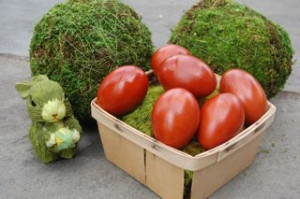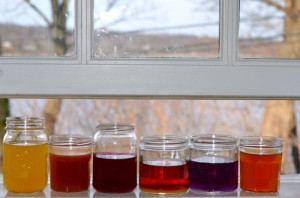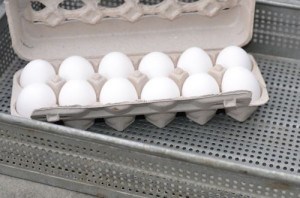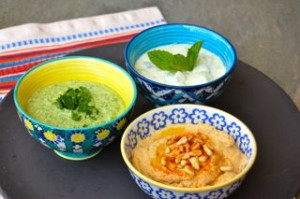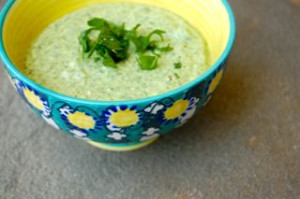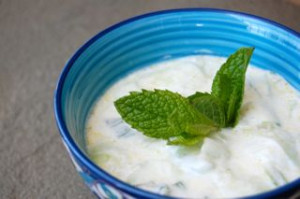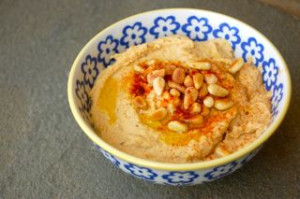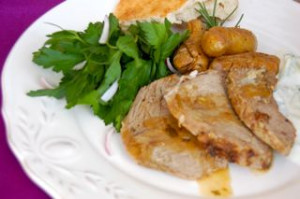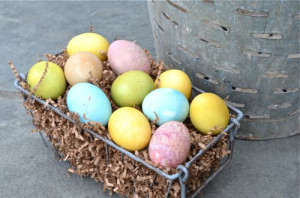Last year I make for the first time, red eggs for Greek Easter using onion skins. I was amazed at how easy and beautiful the eggs turned out. So for Easter this year, I plan on making naturally dyed Easter Eggs in different colors using vegetables and spices many of us already have at home. I had to experiment a little to find what worked best. I suggest using either glass jars with a lid since the natural dyes take longer to color, it’s easiest to make the eggs and dyes and close the jar and store them in the refrigerator over night. The eggs will not have the same uniform color as store bought dyes but I think that gives the eggs a more organic and rustic charm. Many of the dyes needed a cup of boiling water added to an ingredient so I suggest putting the ingredients in a jar while the water is boiling and you will save some time. Below are my favorite dyes! Enjoy!
Tag Archives: Greek Easter recipes
Greek Mezes
As I shared in a previous post, my mother is of Greek heritage. So to add to the Easter Menu, I’m sharing three mezes recipes . Two of the recipes feature fresh mint – one against the saltiness of feta cheese and the other against the coolness of cucumbers and rich yogurt. I’m suggesting them along with the herb crusted leg of lamb from last week’s post but they are both wonderful dishes for summer entertaining which is just a few short weeks away. The third mezes is a red chili hummus, a warming and smooth companion to the cool mint mezes, this is a perfect year round recipe. All three recipes are the essence of greek cooking, fresh, simple and delicious. Say “Yasou” to Greek cooking!
From by the bay, wishing you “happy greek” food memories!
Maryann
Feta and Mint Dip
Ingredients
1/2 cup fresh mint
1/2 cup fresh flat leaf parsley
4 ounces greek feta cheese
1/4 cup olive oil
juice of 1 lemon
1/2 teaspsoon coarse fresh ground pepper
Directions
Plac all the ingredients into a food processor and blend well. Place in a bowl and chill for at least one hour . Serve with pita chips or crackers.
Tzakiki
Ingredients
1 English cucumber
1 tablespoon sea salt
2 cups greek style yogurt
1 tablespoon fresh lemon juice
1 teaspoon lemon zest
2 tablespoons fresh mint, chopped
2 tablespoons olive oil
fine sea salt and pepper to taste
Directions
Peel and thinly slice the english cucumber. Coarse chop and place into a bowl. Add the sea salt and mix. Let sit for about 1 hour. Strain the cucumbers and rinse. Shake off remaining water and place into a bowl. Add the remaining ingredients and mix well. Adjust seasoning with salt and pepper to taste. Place in the refrigerator until ready to use. When serving drizzle with a little more olive oil. Serve on the side of roasted lamb or serve as an appetizer with pita bread.
Natural Red Dye Easter Eggs
One of the many traditions for Greek Easter is the coloring of all the boiled eggs red. In the Greek religion the Easter eggs are used to symbolize the blood of Christ. There is a game played at Easter called Tsougrisma. Each player gets a red egg. One player will gently tap the egg of another player. The winner is the one whose egg does not crack. This player will go on to play others. The winner is the one who successfully cracks the eggs of the other players. It is said that this will bring good luck to the winner through out the year. These are important traditions to my Greek heritage mother, so I did a little research. My maternal grandmother came to the United States early in the 20th Century from a small fishing village in Greece. In that small town they didn’t have access to red dyes. I discovered that the traditional way to dye the Easter Eggs was with a natural dye made from yellow onion skins. This method yields a deep rich byzantine red color, like the color that you find in many of the religious Greek icons. It’s the perfect color, the color of my mom’s childhood and it’s all natural. I suggest trying this out. You boil your eggs in the dye and you can save the dye to color more eggs, I kept it in a plastic container in the fridge. Have fun coloring your Greek Easter eggs!
Herb Crusted Leg of Lamb
Directions
Let leg of lamb stand at room temperature for one hour. Preheat oven to 325 degree F. Rub lamb with 1 teaspoon olive oil, 1/2 teaspoon sea salt and 1/4 pepper. Place into a heavy roasting pan. Meantime, rub head of garlic with 1/4 teaspoon olive oil, wrap in aluminum foil and roast in the oven for about 1 hour until very soft. Let cool. Cut off the head of the garlic and squeeze cloves into a bowl. Use a fork to mash garlic into a paste. Add the remaining olive oil, lemon juice, lemon zest, oregano, parsley, thyme leaves and remaining salt and pepper. Mix well and place to the side. Place lamb into the oven and roast for approximately 1 1/4 hours. Rotate pan and roast another 30 minutes. Remove lamb and slather it with the roasted garlic and herb mixture and place back into the oven to roast another hour or until thermometer inserted at the thickest part reads 160 degrees for medium and 170 degrees for well done. Remove from oven and let rest for 20 minutes. Transfer lamb to cuttting board and cover with foil. Pour off fat from the roasting pan and place on medium heat. Sprinkle in flour and stir with wood spoon. Pour in chardonnay to deglaze pan, scraping up the brown bits, reduce liquid to 1/2 and then add the chicken broth, stirring to combine. Add rosemary and salt and pepper to taste. Slice the lamb and serve with the gravy to the side.

